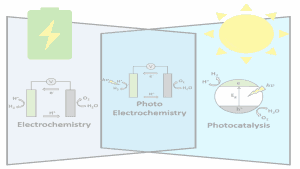In recent years we have been witnessing how summer and winter are gradually lengthening while autumn and spring are becoming much shorter. Moreover, the average temperature in the Earth has also increased due to the climate change. This variation on the characteristics of each season has a direct effect on animals and plants, as the temperature of seas and rivers increases, the poles are melting and species become extinct by the change on weather conditions. All these changes are due to contaminants that we send into the atmosphere causing the greenhouse effect: similar to what happens in an agricultural greenhouse (in which the temperature is kept warm and stable). However, the problem appears when this effect is very prolonged in time and leads to a continuous rise in global temperature. Participate in the development of solutions to reduce the emissions of greenhouse gases and the consequent greenhouse effect in the atmosphere was the motivation to move from the warm land of Alzira (Valencia) for the cold and damp British land, where my PhD project tries to develop alternative engines for ecological vehicles: The so-called green cars.
 Do you know what green cars are? These are the new cars being manufactured that use fuels different to gasoline, such as hydrogen. The use of these vehicles is very important to fight against climate change because they do not emit pollutant fumes but water. Probably you expect that these cars are like the one we see in this picture, but they are actually very similar to the traditional ones, with one essential difference: Instead on running on a traditional engine, these cars run on a fuel cell, a device (see picture) capable of converting chemical energy into electrical energy through a chemical reaction. The main advantage of these devices is that they do not emit greenhouse gasses into the atmosphere, being very efficient and environmentally friendly, as the final product of the power generation process is water.
Do you know what green cars are? These are the new cars being manufactured that use fuels different to gasoline, such as hydrogen. The use of these vehicles is very important to fight against climate change because they do not emit pollutant fumes but water. Probably you expect that these cars are like the one we see in this picture, but they are actually very similar to the traditional ones, with one essential difference: Instead on running on a traditional engine, these cars run on a fuel cell, a device (see picture) capable of converting chemical energy into electrical energy through a chemical reaction. The main advantage of these devices is that they do not emit greenhouse gasses into the atmosphere, being very efficient and environmentally friendly, as the final product of the power generation process is water.
Right now, buying a green car is not affordable for most of us, and therefore improvements have to be established in their manufacturing process to reduce the production costs and make them more affordable for the average citizen. The main improvement that should be done is extending the life of fuel cells that replace the engine by developing durable catalysts. What is a catalyst? It is the component of the fuel cell where the green energy that moves these eco-cars is generated. In order to increase the life of fuel cells and reduce its cost, part of my research project has been based on the development of a methodology for understanding how the catalyst of a fuel cell behaves during the energy production process. With the information obtained, we have developed novel durable catalysts that could help to produce cheaper green cars.

In summary, green cars are a great tool to combat climate change daily and thus help us revert planet warming which is provoking the melting of the poles and the disappearance of many species around the planet.
Thanks to a CERU/SRUK Travel Grant, I have attended the Annual Meeting of the International Society of Electrochemistry in The Hague (Netherlands), a meeting that brought together leading scientists and companies working in the green energy sector. During the meeting I had the opportunity to give a talk and explain my research, allowing me to interact with other scientists and to receive advice on how to improve the materials we had prepared in the laboratory and had given us good results.
By Javier Monzó, PhD student, University of Birmingham. SRUK Constitutency of The Midlands.






